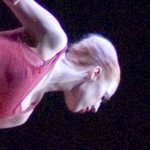jlw
Rangefinder camera pedant
Ted Witcher said:Alot of you guys seem to be getting excellent results in low light from the RD-1, judging from the attachments. Has anybody printed any of their shots to a reasonable wall-hanging size? Possibly comment on the results?
I've got a print of the color photo in my gallery (see below) made on 11x14-inch paper (the largest I normally keep around), which I framed behind glass and hung in my office for a while. I'm probably biased, but I think it looks nice. The dark areas are somewhat "speckled," but I don't find it objectionable; it's hugely better than what I used to get shooting at EI 1600 on color film.
I use an Epson Stylus Photo 1270 printer (still saving up for one of the new pigment printers) and generally make my wall-display prints on Epson Matte Heavyweight paper. The fact that this paper isn't glossy helps (I suspect) break up potential aliasing between the image pixels and the printer's ink-dot pattern. Slap it in a frame, put a sheet of glass over it, and you've got a nice-looking display image.
Actually, you can get away with a lot with prints made to hang on a wall -- the larger they are, the farther away people generally stand when they look at them, so the amount of detail you need for a good-looking image is probably no more (and maybe less) than you'd need for an 8x10 print that would be held in the hand and examined closely at reading distance.
In fact, one time I printed one of my R-D 1 images at about 24x36 inches on one of the wide-format HP Designjet 5500 printers we have at work (I told the boss we needed to check the printer calibration) and have gotten a lot of compliments on the result. People tend to look at a print this big from a couple of arms' lengths away, and at that distance it looks plenty detailed and has lots of impact.
Here's my gallery image, and the detail crop is attached below:



